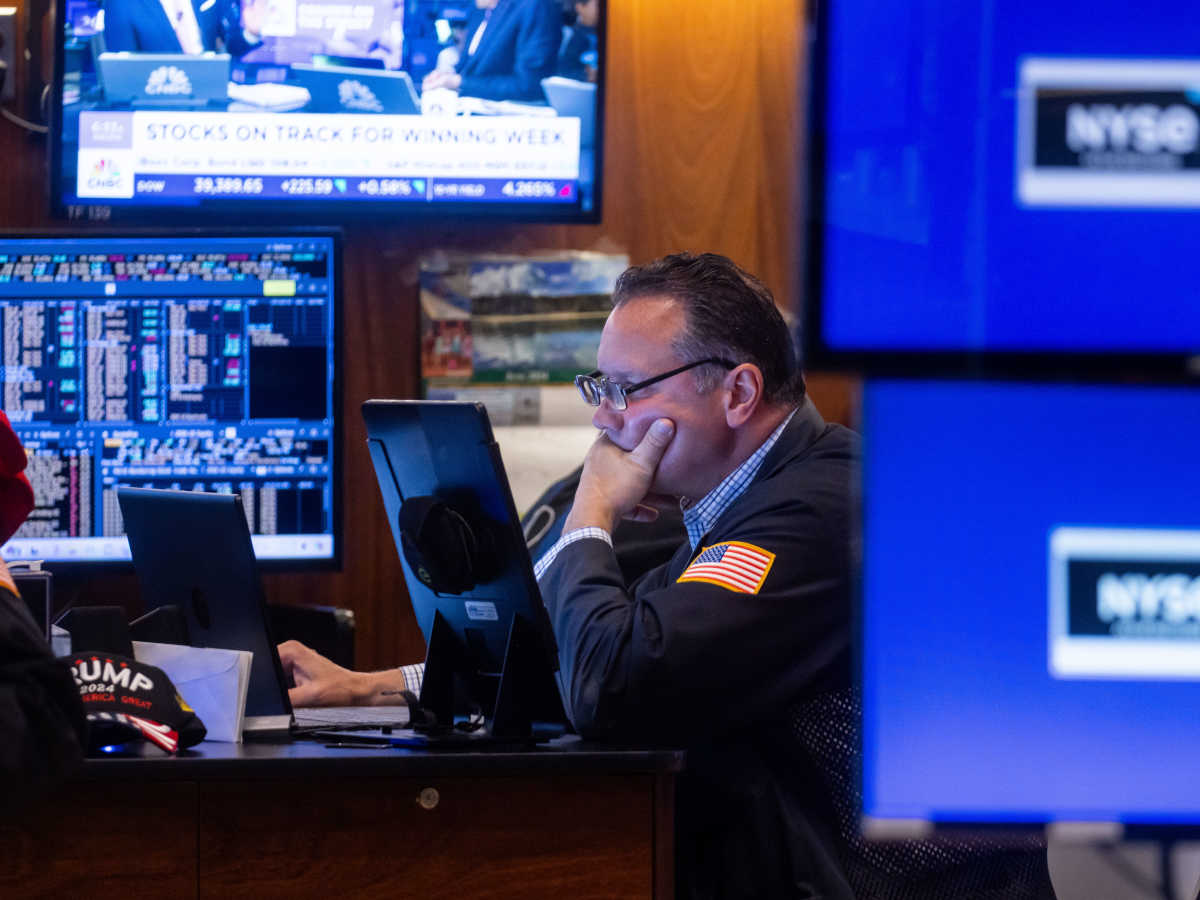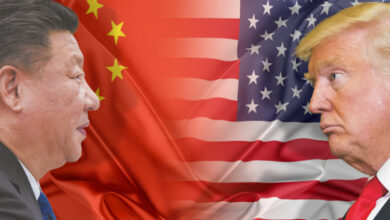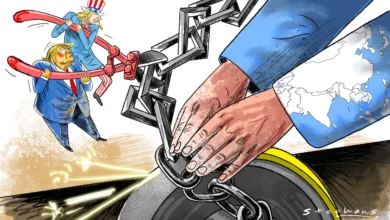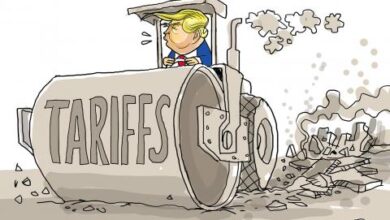What Is US “Strategic Bitcoin Reserve” That Trump Has Established And Are “Globalists” The Real Reason For Stock Market Tumble?

President Donald Trump has signed an executive order establishing a Strategic Bitcoin Reserve marking a significant shift in U.S. digital asset policy. This new reserve marks the government’s formal recognition of Bitcoin as a long-term store of value and a strategic asset.
According to estimates, the U.S. government already controls approximately 200,000 Bitcoin. However, no comprehensive audit has ever been conducted to confirm the exact holdings. Trump’s executive order mandates a full accounting of all federal digital asset holdings and explicitly prohibits the sale of Bitcoin from the reserve. Thus, in all effect, the administration has positioned Bitcoin as a permanent financial asset akin to gold.
White House Crypto and AI Czar David Sacks, who is a well-known Silicon Valley venture capitalist, confirmed the development on X, stating that the reserve will be funded exclusively through Bitcoin seized in criminal and civil forfeiture cases. This approach ensures that taxpayers bear no financial burden while reinforcing the U.S. government’s growing engagement with digital assets.
In addition to the Strategic Bitcoin Reserve, the order establishes a U.S. Digital Asset Stockpile, which will be managed by the Treasury Department. This separate entity will hold other cryptocurrencies confiscated in criminal proceedings; however, this move has sparked debate among crypto investors and industry insiders.
![]()
Good Or Bad?
The crypto community had a mixed reaction to Trump’s decision to include other digital currencies such as Ether, XRP, Solana (SOL), and Cardano (ADA) as part of a strategic crypto reserve. It should be noted that while there are many who see this as an inclusive approach, Bitcoin maximalists, including billionaire Tyler Winklevoss, have voiced concerns stating that while he has nothing against XRP, SOL, or ADA, but that he does not think are suitable for a Strategic Reserve.
Further commenting that – only one digital asset in the world right now meets the bar, and that digital asset is Bitcoin.
Following the announcement, the crypto market reacted with volatility. Bitcoin dropped around 5%, Ether and Solana saw similar declines, and Cardano’s ADA suffered aCrypto steep 12% plunge. Analysts attributed the sell-off to uncertainty regarding the reserve’s long-term implications and its immediate market impact.
Bitcoins Are Here To Stay
Despite the short-term market fluctuations, some industry leaders view the move as a significant validation of Bitcoin’s role in the global financial system.
Nic Carter of Castle Island Ventures stated that the U.S. government committing to a Bitcoin-only reserve would solidify its status as a global asset comparable to gold.
He noted that the U.S. is the most important nation in the world, and their stamp of approval really does a lot for Bitcoin. Had they included multiple digital currencies, it would have looked more like a speculative fund rather than a true reserve.
Ryan Gilbert, a fintech investor, echoed this sentiment, emphasizing the message this sends to institutions stating that for the past decade and a half, many have argued that Bitcoin is the way to go while ignoring other tokens. However, this move could further cement Bitcoin’s status as the dominant digital asset.
However, he also urged caution regarding how the government manages the reserve – what we don’t want to see is the U.S. actively trading Bitcoin. A reserve should be a long-term store of value, not a tool for market speculation.
The policy will be overseen by Treasury Secretary Scott Bessent and Commerce Secretary Howard Lutnick, who will focus on budget-neutral acquisition strategies to accumulate Bitcoin without imposing additional costs on taxpayers. Sacks, who has been an advocate for a stronger U.S. crypto presence, described the move as a historic milestone in positioning the country as a global leader in digital assets.

“Globalists” The Real Reason For Stock Market Tumble
Coming to the markets, stocks resumed their sharp pullback on Thursday as investor anxiety over President Donald Trump’s evolving trade policies triggered a widespread sell-off across major indices.
The Dow Jones Industrial Average tumbled 427.51 points, or 0.99%, closing at 42,579.08, after plunging more than 600 points at session lows. The S&P 500 slumped 1.78% to 5,738.52, while the Nasdaq Composite fell 2.61% to 18,069.26, officially entering correction territory – defined as a 10% decline from a recent peak.
Thursday’s rout followed fresh U.S. tariffs on Canadian, Mexican, and Chinese imports, which rattled financial markets. In response, Canada and China imposed retaliatory tariffs, while Mexico signaled it would announce countermeasures over the weekend. The Nasdaq has now dropped over 4% this week, with the Dow and S&P 500 down 2.9% and 3.6%, respectively, setting all three indices up for their worst week since September 2024.
The sell-off resumed despite the White House’s announcement on Wednesday of a one-month delay on auto tariffs for vehicles compliant with the United States-Mexico-Canada Agreement. While that move had sparked a brief market rebound, hopes that the administration would continue softening its stance faded as uncertainty around the policy persisted.
On Thursday, Trump extended tariff exemptions for additional Canadian and Mexican goods under the USMCA, but the announcement failed to boost sentiment. Treasury Secretary Scott Bessent further stoked concerns by defending tariffs at an Economic Club of New York event, casting doubt on the White House’s willingness to make significant compromises. His remark referring to Canadian Prime Minister Justin Trudeau as a “numbskull” and emphasis on prioritizing Main Street over Wall Street only heightened investor jitters. The S&P 500 sank to its lowest level since early November.
Adding to the turmoil, a pullback in artificial intelligence stocks that had driven much of the market’s gains in recent months intensified losses. Semiconductor stocks led the decline, with Marvell Technology plunging nearly 20% after issuing mixed first-quarter guidance. ON Semiconductor, Taiwan Semiconductor, and Nvidia also posted steep declines.
Economic data further fueled fears that Trump’s policies could weigh on growth. The Federal Reserve’s Beige Book and the Institute for Supply Management’s manufacturing survey pointed to rising input costs due to tariffs, while layoff announcements soared to their highest level since 2020, according to data from Challenger, Gray & Christmas. The firm attributed the spike in job cuts partly to Trump and Elon Musk’s push to shrink the federal workforce.
Amid the broader market slump, bank stocks have been hit particularly hard, dragged down by trade-related uncertainty and growing signs of economic softening.
The Last Bit
As investors brace for further trade-related volatility, markets remain on edge ahead of Friday’s closely watched jobs report, which could offer fresh clues about the U.S. economy’s resilience in the face of mounting policy uncertainty.
The recent turbulence in traditional stock markets and cryptocurrencies also indicates a broader theme – investor sentiment is being tested across asset classes. While Wall Street struggles with trade policy uncertainties, banking sector sell-offs, and economic slowdown fears, the crypto market faces its own volatility, driven by regulatory scrutiny, macroeconomic trends, and shifting investor appetite.
Recently, Bitcoin’s surge past $100,000 reflects a growing belief in digital assets as a hedge against traditional financial instability, but the market remains highly speculative. Just as stocks react to political and economic signals, crypto markets are sensitive to regulatory developments, institutional adoption, and technological advancements.
Notably, whether in stocks or cryptocurrencies, the common thread is uncertainty. While some investors choose to ride out the storm with patience, others are adjusting strategies to mitigate risk. What remains clear is that in both markets, stability and clarity from policymakers will be key factors in determining the next move.




